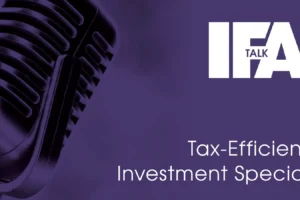Nick Sudbury explains why ITs have outpaced their more flat-footed rivals in the last year
The RDR has created a more level playing field in which open and closed-ended funds can compete on an equal basis. Investment trust advocates argue that these products have not had the recognition they deserve until now – and there is compelling evidence to suggest that they may be right.
The Winterflood Investment Trust team has analysed the performance of closed-ended funds against their open-ended counterparts, and the results are pretty unequivocal. Over the 12 months to the end of November, the team reports, investment trusts outperformed in 13 of the 16 sectors of the market. Similar analysis by Canaccord Genuity has found that the difference in returns can be more than 100% over a 10 year period.
Simon Elliott, who heads the research team at Winterflood, says that investment trusts have traditionally been good bull market products.
“One advantage is that they can employ gearing, which will help them to outperform if markets rise over time. Traditionally, they have also benefited from lower fees. Pre-RDR, an open-ended fund may have had an AMC of 1.5%, whereas there are many investment trusts with fees of 1% or even 0.5%. Over time, this can make a big difference.”
A Stellar Year
Last year’s star performer, by some distance, was Japan. According to Winterflood, the three Japanese investment trusts studied produced an average return of 60.2%, whereas the 60 or so open-ended funds examined achieved a sector average of just 31.8%. The stark differential was partly due to the gold-medal performance of Baillie Gifford Japan, whose 86% return was streets ahead of any OEIC or unit trust.
The next largest difference was in the European Smaller Companies sector, where the average investment trust returned 57.9% compared to the 31.5% achieved by its open-ended peer group. There were also differences of more than 10% in the Smaller Companies sectors from both the UK and Japan; the biggest underperformance, meanwhile, was in Global Growth & Income, where the IT shortfall was 6.7%.
“The classic investment trust trade is to buy an area that’s unloved by the market,” says Elliott. “That way, when it comes back there is the double whammy of the underlying growth and the tightening of the discount. That was the case last year with Japan and with the smaller companies sectors, which were all re-rated by the market. This year, the long-term opportunity could be the Emerging Markets and Asia.”
Last year’s outperformance was certainly unusually strong, but the trend is well established and documented. According to Winterflood, investment trusts have outperformed their open-ended equivalents in 13 out of 16 sectors over the last decade, with the biggest annualised differences running out at between 200 and 300 basis points.
Apples and Pears
If the conclusion we’re reaching seems pretty clearwe need to remember that the comparison is not necessarily as straightforward as it sounds. For instance, Winterflood used the IMA sector average, which takes no account of the differing sizes of funds, but then compared it against the cap-weighted Morningstar Peer Group Index. It’s possible, then, that these different weightings could have distorted the figures.
That would be hard to quantify. But data produced by Canaccord Genuity on behalf of the Association of Investment Companies (AIC) suggests that, even when you strip out this anomaly, investment trusts still typically outperform. Canaccord’s analysis compares the average unweighted returns of 16 sectors to the end of September, measured over one, five and ten years. Out of these 48 reference points, there were only four instances of open-ended funds beating their investment trust peers.
Canaccord’s analysis suggests that the outperformance of investment trusts is quite staggering. In five of the 16 sectors, it says, the total return of the average investment trust over the last 10 years was more than 100% higher than the equivalent open-ended result. In the specialist Technology, Media and Telecoms funds sector, the excess was over 280%.
Categories Renamed
The AIC has recently renamed five investment trust sectors, so as to align them with their open-ended counterparts. For example, UK Growth & Income has now become UK Equity Income, while UK Growth is now UK All Companies.
“Investment companies and open-ended funds do have some differences,” says Annabel Brodie-Smith, communications director at the AIC, “but they are both collective investments, and so it makes sense to consider both when looking for an appropriate fund for a client. The sector name changes make this much more straightforward.”
Strong Inflows
There is evidence to suggest that advisers are more willing to recommend investment companies post RDR. Research commissioned by the AIC shows that during the first nine months of 2013, wealth managers invested a total of £241 million in closed-ended funds – a 66% increase on the equivalent period in 2012.
“I think the increase is due to a combination of performance, RDR and the industry’s strong track record when it comes to income which has boosted interest in the industry,” notes Brodie-Smith.
Premiums And Discounts
Like any other share, the price of an investment trust fluctuates according to the performance and the prevailing investor sentiment. This means that, unlike a unit trust or an OEIC, the shares are likely to trade at either a premium or discount to their underlying NAV at any time.
Discounts to NAV are regarded as normal, because the market knows that if the fund were ever to be wound up, there would be selling costs entailed in disposing of its holdings, So the share price needs to take this possibility into account.
However, data from the AIC, using Morningstar, shows that the investment company industry closed 2013 at a 3.4% average discount – its lowest since records began in December 1970. According to Winterflood, the sector average discount narrowed by 1.5% over the year, and they have tightened considerably over the last 10 years – suggesting steadily growing confidence.
Gearing
Gearing was another contributory factor to the sector’s strong performance in 2013. As long as their mandates permit it, investment trusts can borrow and then invest the proceeds. This will enhance their returns as long as the gains on the assets exceed the cost of the debt.
At the end of 2013 the average level of gearing was 8%; but there are some wide differences. 43% of all investment trusts have no gearing whatsoever, while 31% have up to 10%. The remaining 26% maintain more than 10% gearing – and obviously, it’s this latter group that is likely to have benefited the most last year.
Timing and Opportunity
Investment trusts turned out to be the ideal product for exploiting last year’s bull market – and, even though many discounts have now narrowed, the gearing and the structural advantage of the closed-ended nature of the funds should still allow them to continue to outperform on a long-term basis.
If the markets are weaker in 2014, and if the cost saving is eroded by the move to clean share classes, there is still the scope to add value by concentrating on unloved sectors with wider than normal discounts, such as Asia and the Emerging Markets.
Performance Enhancers
· Investment companies are listed on the stock exchange like any other company, and they have an independent board of directors that is responsible for appointing and overseeing the fund managers.
· They are closed-ended, in that they have a set number of shares which they use to raise a fixed pool of capital. Investors simply buy or sell them on the LSE in the same way as company shares.
· A noticeable difference between open and closed-ended products is that investment trusts tend to have lower ongoing charges. This is partly due to cheaper annual management fees, but it also reflects the fact that the manager, unlike his open-ended equivalent, does not have to continually buy and sell holdings in response to daily client cash flows.
· Will this difference in fee sizes remain? With open ended-funds now moving to clean share classes, it is possible that the cost advantage will be eroded.
· But investment trust boards are well aware of what is happening, and a number have been renegotiating their management fees downward.The AIC’s Annabel Brodie-Smith says that many retail focused investment companies continue to offer good value on the fees front, with 28% of AIC members now charging under 1%.
· Closed-ended structures allow managers to take a longer term view, because they know that they will not be faced with a flood of client redemptions. Depending on their mandates, this might allow them to invest in less liquid holdings that have the potential to generate higher returns.
· This is particularly relevant to volatile sectors such as private equity, direct property and the emerging markets. By comparison, the credit crisis of 2008 was particularly problematic for open-ended property companies, since they were unable to sell their illiquid holdings fast enough to meet client demand – and, in many cases, had to suspend redemptions.















